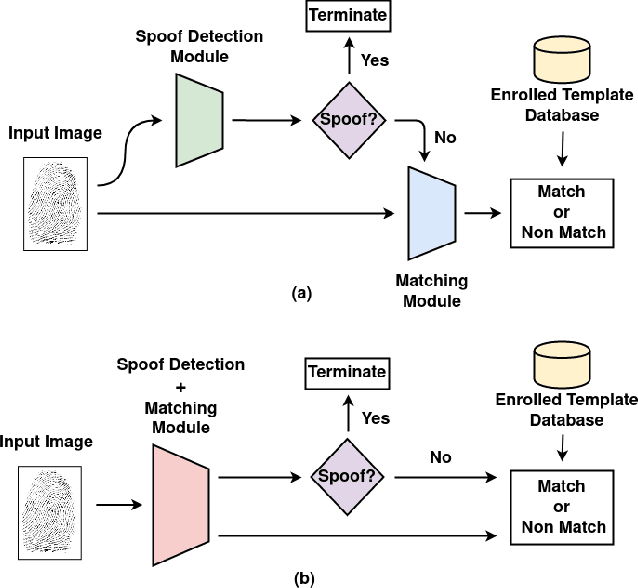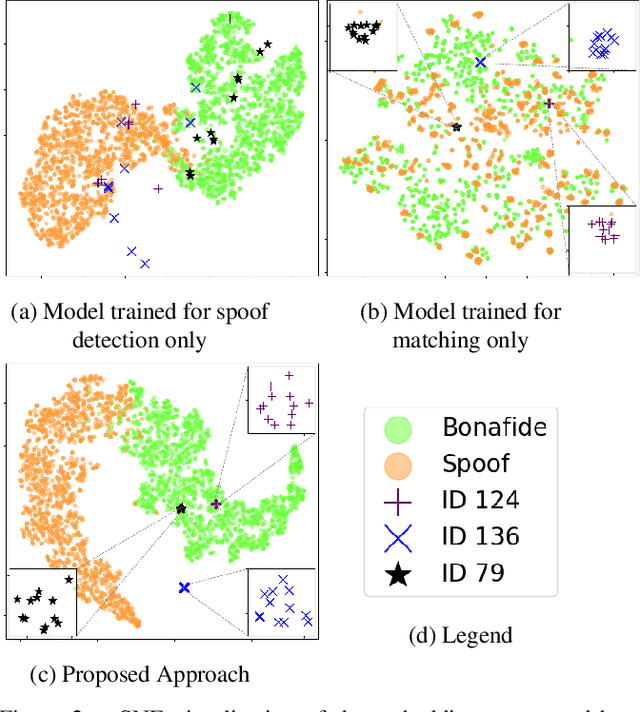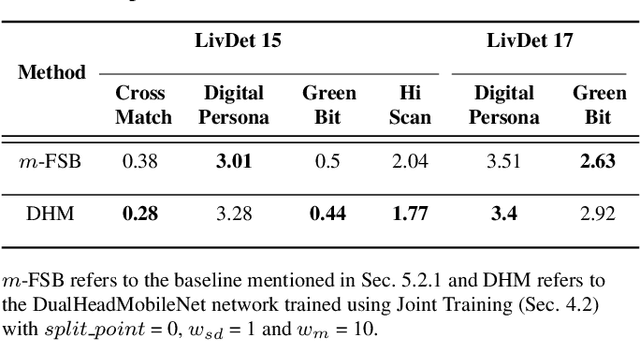A Unified Model for Fingerprint Authentication and Presentation Attack Detection
Paper and Code
Apr 07, 2021



Typical fingerprint recognition systems are comprised of a spoof detection module and a subsequent recognition module, running one after the other. In this paper, we reformulate the workings of a typical fingerprint recognition system. In particular, we posit that both spoof detection and fingerprint recognition are correlated tasks. Therefore, rather than performing the two tasks separately, we propose a joint model for spoof detection and matching to simultaneously perform both tasks without compromising the accuracy of either task. We demonstrate the capability of our joint model to obtain an authentication accuracy (1:1 matching) of TAR = 100% @ FAR = 0.1% on the FVC 2006 DB2A dataset while achieving a spoof detection ACE of 1.44% on the LiveDet 2015 dataset, both maintaining the performance of stand-alone methods. In practice, this reduces the time and memory requirements of the fingerprint recognition system by 50% and 40%, respectively; a significant advantage for recognition systems running on resource-constrained devices and communication channels.
 Add to Chrome
Add to Chrome Add to Firefox
Add to Firefox Add to Edge
Add to Edge